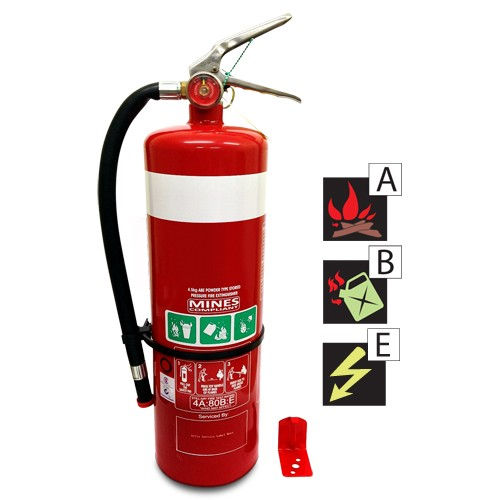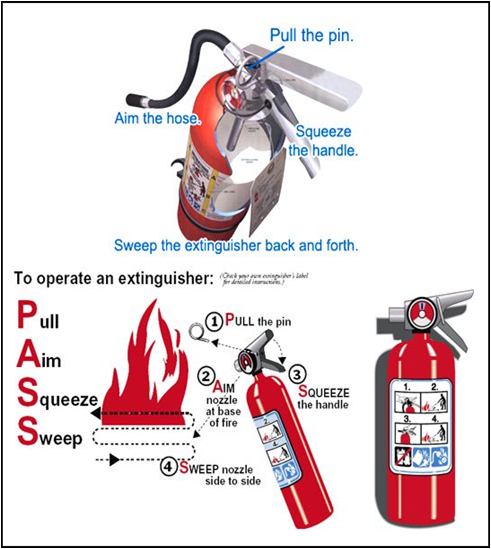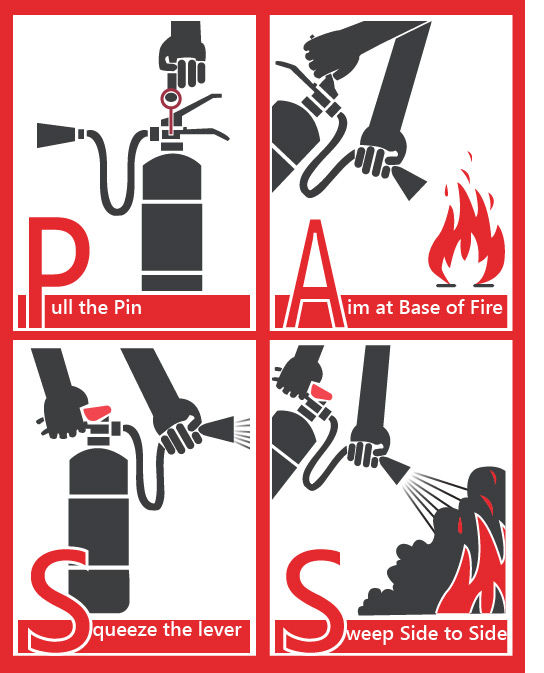Essential Steps for Safely Using a Fire Extinguisher
Fires can strike unexpectedly, posing significant risks to both property and life. When faced with a fire, having the knowledge and ability to use a fire extinguisher effectively can prove invaluable. This comprehensive guide delves into the essential steps to take both before and after using a fire extinguisher, ensuring a strong emphasis on safety at every stage of the process.

Assess the Situation?
Assessing the Fire - Before you rush to disable a fire, it is imperative to conduct a thorough evaluation of the situation. This involves asking yourself a series of critical questions that can determine the safety and effectiveness of your response:
What is burning?
Identifying the material that is ignited is vital for choosing the appropriate extinguisher. Different types of fires correspond to different extinguishing agents and methods. For example:
- Class A fires involve common combustibles, such as wood, paper, and cloth, which can be extinguished with water or foam agents.
- Class B fires involve flammable liquids like gasoline, oil, and solvents, necessitating extinguishers designed for chemical fires.
- Class C fires concern electrical equipment and require non-conductive agents to safely eliminate the blaze without creating further hazards.
- How large is the fire?
Evaluating the size and growth of the fire is critical. A small, contained fire, such as one contained in a wastebasket, is typically manageable. Conversely, if the flames are spreading uncontrollably or reach a size beyond your control, your immediate priority should be to evacuate and contact emergency services. Remember, protecting life is more important than saving property.
- Are there any people or animals in immediate danger?
Always prioritize the safety of those in your vicinity. Ensure that anyone present is aware of the fire, directing them toward safety. If possible, assist children, the elderly, or disabled individuals in exiting the premises quickly.

Steps to Take Before Using a Fire Extinguisher?
Prepare for Action - Preparing yourself mentally and physically to tackle the fire is equally as important as possessing the right tools. A well-considered plan of action can dramatically enhance your chances of successfully extinguishing the blaze while keeping everyone safe. Here are the essential preparatory steps:
1. Prepare Your Escape Route
Identifying a clear escape path ensures you can exit safely if the fire escalates. Consider the following crucial points:
- Know Your Exits: Familiarize yourself with the fastest routes out of the area. If you’re in an unfamiliar environment, take a moment to note the positions of doors and windows.
- Position Yourself Wisely: As you confront the fire, position yourself so that your back is to the exit. This simple action facilitates a speedy retreat should the situation worsen. Always be aware of your surroundings; remaining calm and collected in a crisis can save valuable seconds.
2. Inspect the Extinguisher
Not all fire extinguishers function optimally, and those that are defective can inadvertently place you in great danger. Follow these systematic checks to ensure the extinguisher you are relying on is ready for action:
- Check the Pressure Gauge: Look closely at the pressure indicator. Ensure that the needle is firmly positioned within the green zone, signifying that the extinguisher is correctly pressurized and ready for use.
- Confirm the Pin is Intact: The pin is there to prevent accidental discharge. Verify that it is placed securely and that there’s no sign it has been tampered with.
- Look for Damages: Examine the body of the extinguisher for any signs of wear and tear, such as dents, rust, leaks, or corrosion. Any visible damage can compromise its functionality.
3. Follow Safety Protocols
Utilizing a fire extinguisher should always be part of a broader safety protocol that includes alerting emergency services. Safety should be the foremost concern:
- Notify Others: If feasible, have a bystander call emergency services whilst you prepare to engage with the fire. Never leave the scene alone to make this call unless you are assured the fire is contained.
- Avoid Smoke Inhalation: Smoke can be lethal. When moving to combat the fire, keep your head down to remain below the smoke while you act. Low visibility and reduced air quality can turn a manageable scenario into a dangerous situation.

How to Use a Fire Extinguisher
Once you’ve equipped yourself with the necessary knowledge and tools, you can confidently act. Employing the PASS method provides a straightforward yet effective strategy for using a fire extinguisher:
1. Pull
The first action is to pull the pin located at the top of the extinguisher. This step breaks the plastic seal and readies the unit for use.
2. Aim
Your aim is crucial. Direct your attention towards the base of the fire rather than the flames themselves. By targeting the fuel source, you increase the chances of successfully extinguishing the blaze.
3. Squeeze
Once correctly aimed, engage the extinguisher by squeezing the handle firmly. Maintaining a steady grip is essential, as the extinguisher may discharge forcefully.
4. Sweep
Sweep the nozzle from side to side at the bottom of the fire. Continue this sweeping motion until you are confident that the fire has been fully extinguished. Pay close attention to any remaining heat, embers, or smoke, as these could indicate that the fire is not entirely out.
What to Do After Using a Fire Extinguisher?
Even after successfully extinguishing a fire, it’s vital to follow up with the correct procedures to ensure safety and compliance with fire safety protocols:
1. Clean Up Residue
Cleaning up after using a fire extinguisher is essential for both safety and health. The residue left behind can vary depending on the type of extinguishing agent used, necessitating specific cleanup protocols:
- Dry Chemical Extinguishers: These extinguishers often leave a mess that can be unpleasant and hazardous if inhaled. Start by vacuuming loose debris and then use a combination of rubbing alcohol and warm water to scrub away any remaining residues.
- Wet Chemical Extinguishers: If you’ve used a wet chemical extinguisher, be sure to wear gloves for protection. Thoroughly clean the area with hot, soapy water to remove sticky residues, ensuring that you dispose of any contaminated materials properly.
2. Check Extinguisher Status
After deploying a fire extinguisher:
- Recharging or Replacing: Extinguishers are not designed for one-time use. Have your unit professionally serviced to ensure it is safe and functional for future use. Do not attempt to refill or recharge it yourself unless you are trained and certified to do so.
- Document the Use: Keep a record of when and how the extinguisher was used. This information can be vital for both safety equipment audits and insurance claims.
3. Monitor for Re-ignition
Even after quelling a fire, vigilance is paramount:
- Watch for Smoldering Materials: Diligently observe the area where the fire occurred. Smouldering materials can reignite unexpectedly, leading to renewed danger. Stay alert for smoke or heat emanating from any objects that may have been involved.
- Inspect Underneath Objects: Ensure you check under furniture, behind appliances, or in other areas where the fire might have smouldered unnoticed. It can be easy to overlook these posts, and re-ignition poses a significant risk.
4. Report the Incident
Even if you successfully extinguished the fire, it is still crucial to communicate with local fire authorities:
- Documentation and Inspection: Reporting the incident allows fire officials to conduct necessary inspections, ensuring that your environment is free from underlying hazards that could spark further incidents.
- Insurance Claims: Thorough documentation of the fire incident can also be instrumental in facilitating any necessary insurance claims related to damages sustained during the event.
Conclusion
Fires can occur suddenly and without warning, and having the knowledge and preparation to act can significantly impact the outcome. By mastering the steps to take before, during, and after using a fire extinguisher, you not only protect yourself but also safeguard those around you. Always prioritize safety and remain vigilant; never hesitate to call for professional assistance in cases that are beyond your control. In an emergency, your quick thinking and knowledgeable actions can save lives and prevent catastrophic damages. The more prepared you are now, the safer you’ll be when it truly matters.






Comments